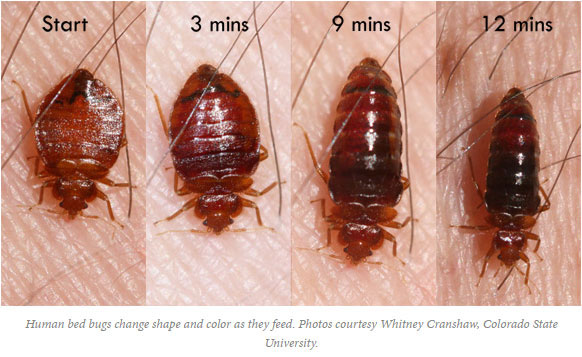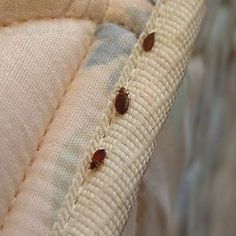A1 Bed Bug Exterminator Houston: Reliable Treatment Providers
A1 Bed Bug Exterminator Houston: Reliable Treatment Providers
Blog Article
Recognizing the Lifecycle of Parasites for Targeted Control Strategies
Recognizing the lifecycle of insects is an essential element of effective pest management strategies. By understanding the different phases of advancement that insects undertake, a much more specific and targeted technique can be adopted to regulate their populations. This expertise not only clarifies the susceptabilities within the pest lifecycle yet also leads the way for applying calculated measures that can interrupt their development and reproduction cycles. Via a deeper understanding of just how insects grow and develop, customized control techniques can be created to address certain points in their lifecycle, eventually bring about more effective pest administration end results.
Significance of Comprehending Bug Lifecycle
Recognizing the lifecycle of pests is vital for establishing reliable and targeted control approaches in pest management. By comprehending the different phases a parasite goes through from egg to adult, insect control experts can determine weak spots in the lifecycle where treatment can be most effective. As an example, recognizing when larvae are most energetic can aid figure out the ideal timing for applying larvicides. Additionally, understanding the lifespan of a pest species can aid in predicting populace development patterns and possible problem dangers.
Additionally, acknowledging the particular environmental problems needed for each stage of the parasite's lifecycle can assist decisions on habitat alteration or exclusion methods to decrease and disrupt the lifecycle parasite populations. This knowledge makes it possible for pest administration professionals to implement positive steps instead of depending solely on responsive treatments, leading to even more long-lasting and lasting parasite control options. Ultimately, a detailed understanding of insect lifecycles encourages insect control practitioners to customize their techniques properly, lessening environmental effects and making the most of control end results.
Key Phases in Pest Advancement
To effectively carry out targeted control strategies in insect monitoring, an essential facet depends on thoroughly recognizing and understanding the essential phases in pest advancement. Bug growth generally is composed of numerous key stages that are vital for their lifecycle and management. The first phase is the egg phase, where parasites lay eggs that later hatch into larvae. Larvae after that proceed right into pupae, a phase where they undergo metamorphosis before becoming grown-up parasites. Recognizing these stages is important as it assists in determining at risk factors in the lifecycle where control measures can be most effective.

Susceptabilities in Insect Lifecycle
Throughout the various stages of a bug's lifecycle, distinct vulnerabilities arise that can be purposefully targeted for effective control procedures (A1 Bed bug Exterminator houston). One important vulnerability lies in the egg stage, where bugs are often much more prone to particular pesticides or biological control agents due to their soft outer covering, making them less complicated targets for treatment. Understanding these vulnerabilities in the insect lifecycle is necessary for creating precise and efficient control methods that properly take care of pest populations while minimizing environmental effect.
Executing Targeted Control Procedures

Executing targeted control procedures generally entails a multi-faceted approach. This may include environment alteration to make the environment less welcoming to parasites, such as removing standing water for mosquito control or sealing entrance factors for rats. Additionally, biological control techniques can be used, where all-natural killers or pathogens are introduced to keep insect populaces in check.
Chemical control, such as the mindful application of chemicals, is another common technique. It is necessary to make use of these materials deliberately to decrease environmental influence and potential injury to non-target types - A1 bed bug extermination houston. Integrated Parasite Monitoring (IPM) approaches that incorporate numerous control actions in a worked with and lasting way are commonly the most efficient in achieving long-term pest monitoring objectives. By carrying out targeted control procedures based on a comprehensive understanding of insect lifecycles, pest populaces can be properly managed while reducing risks to human health and the setting.
Boosted Insect Monitoring Practices

Moreover, the consolidation of organic control agents, such as natural predators or virus of bugs, can assist lower reliance on chemical pesticides and advertise a more well balanced community. Applying physical barriers and catches can also belong to boosted insect monitoring practices, using non-toxic and targeted options for parasite control. Furthermore, making use of pheromones and other semiochemicals can interfere with pest mating patterns and communication, bring about reduced bug populaces over time.
Final Thought
To conclude, understanding the lifecycle of bugs is crucial for effective bug monitoring strategies. By determining crucial phases in pest advancement and susceptabilities in their lifecycle, A1 bed bug extermination houston targeted control actions can be implemented to reduce bug populaces. Boosted pest management methods can help in reducing the dependence on broad-spectrum chemicals and advertise more ecologically pleasant and lasting parasite control approaches. This expertise plays a vital role in maintaining healthy environments and farming efficiency.
Understanding the lifecycle of parasites is crucial for creating reliable and targeted control methods in insect management. By comprehending the numerous phases an insect goes through from egg to adult, parasite control experts can determine susceptible factors in the lifecycle where treatment can be most successful. Ultimately, a thorough understanding of parasite lifecycles equips insect control practitioners to customize their methods efficiently, making the most of and minimizing ecological impacts control end results.
By carrying out targeted control measures based on a detailed understanding of bug lifecycles, pest populaces can be efficiently regulated while lessening risks to human health and wellness and the atmosphere.
By recognizing essential stages in parasite development and vulnerabilities in their lifecycle, targeted control procedures can be applied to minimize insect populaces.
Report this page